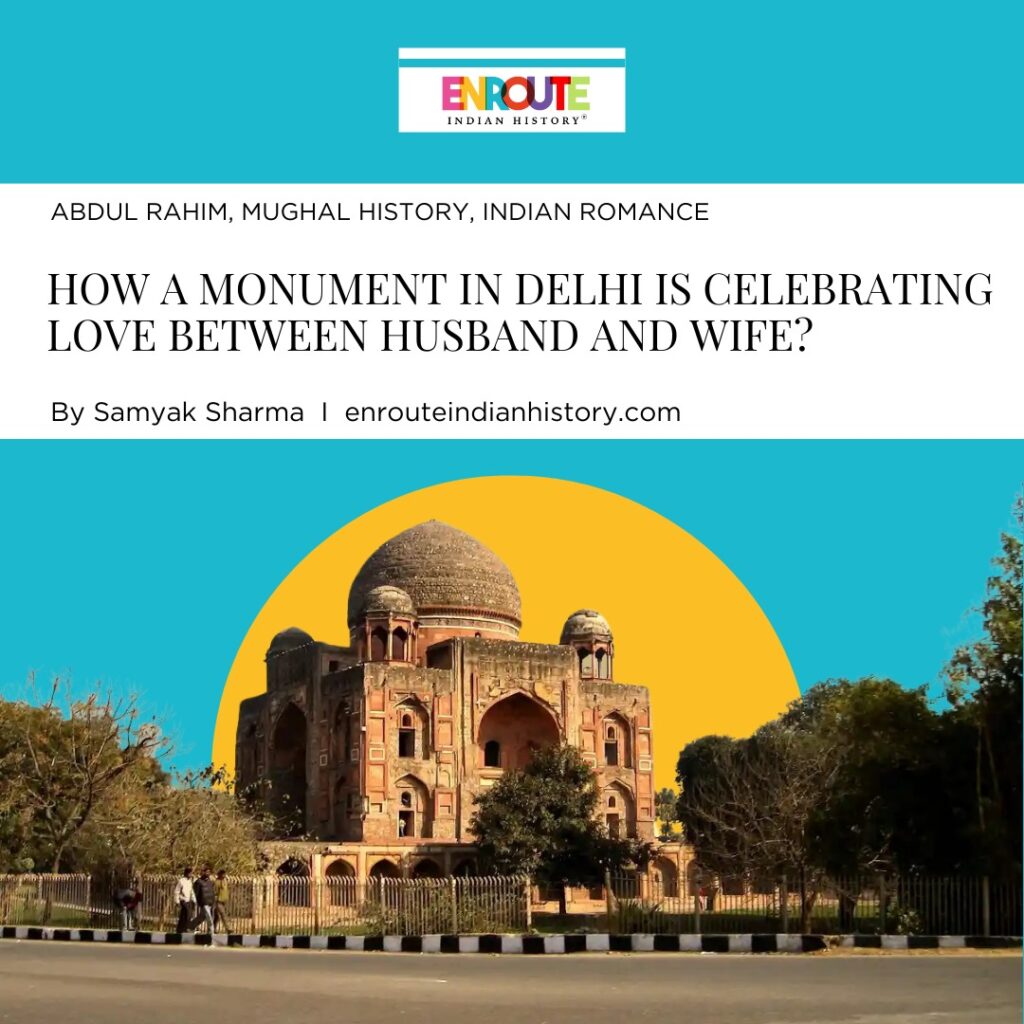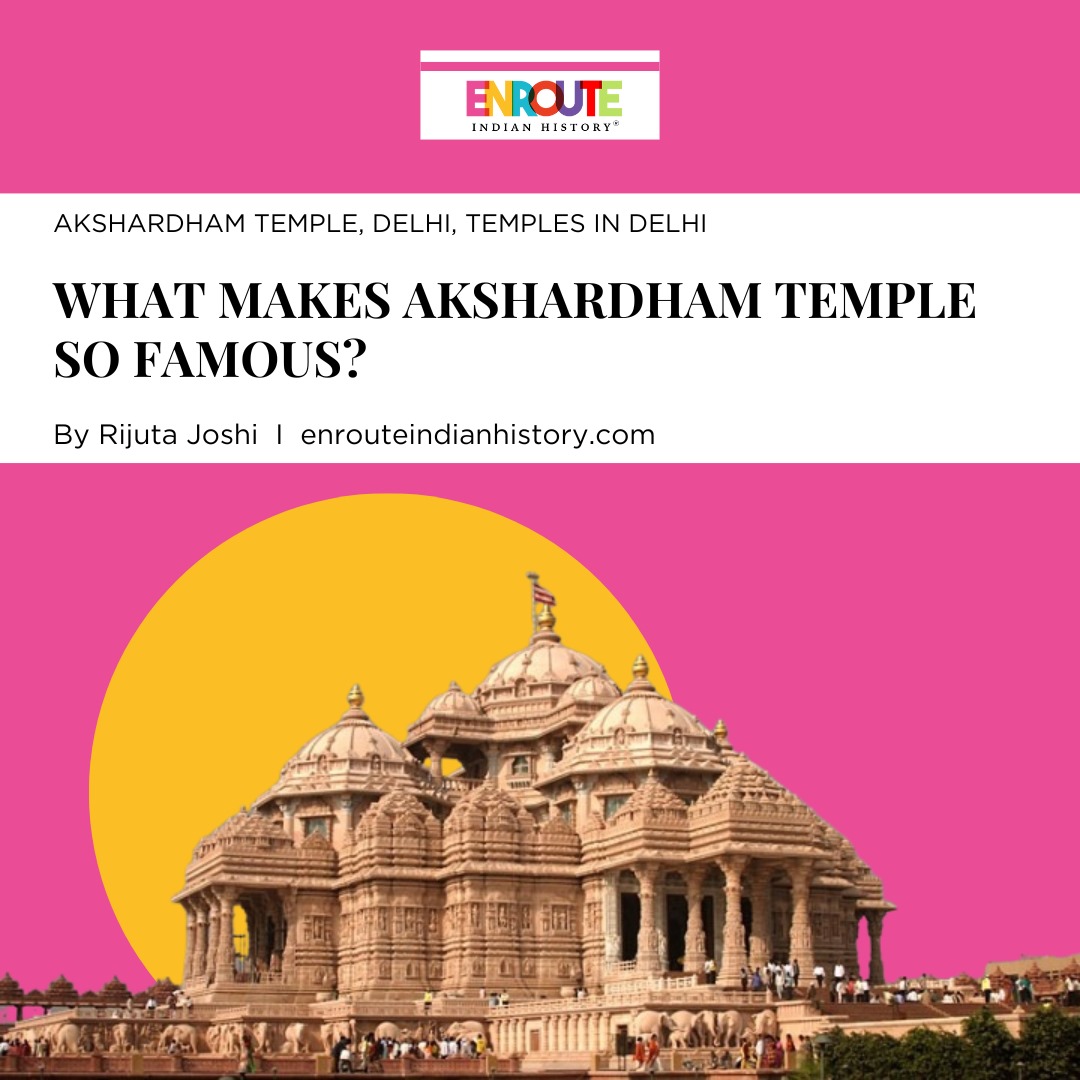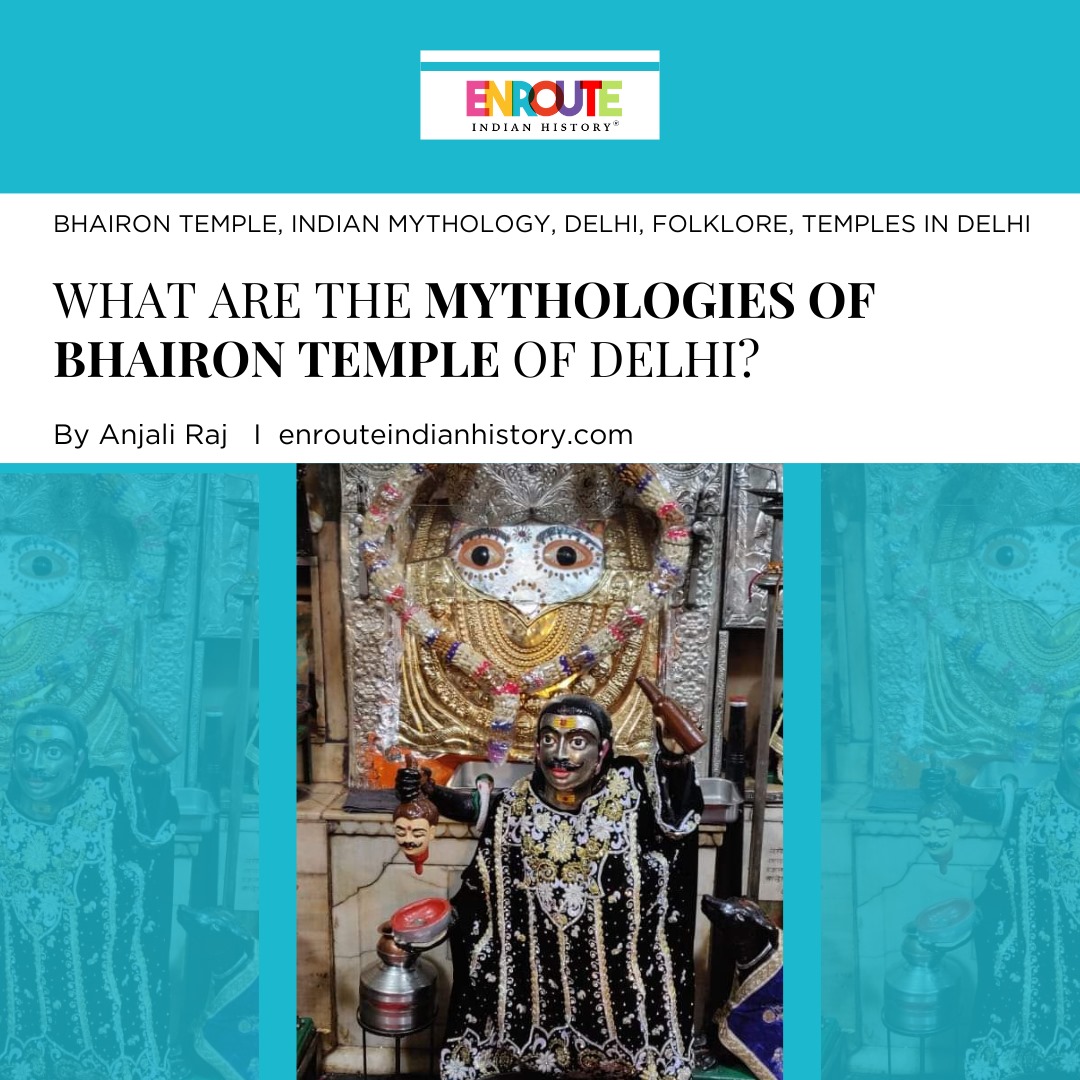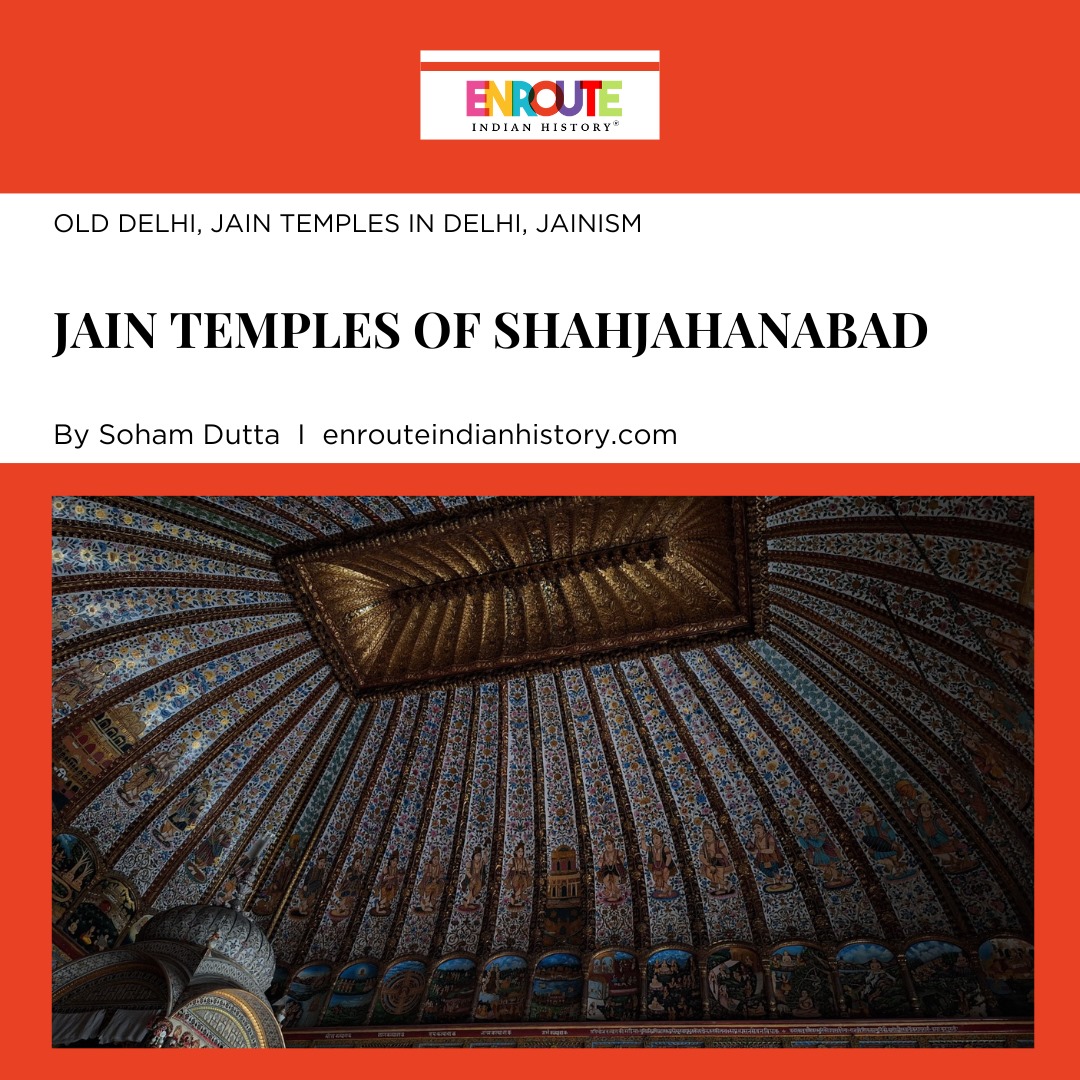How a Monument in Delhi is Celebrating Love Between Husband and Wife?
- enrouteI
- February 16, 2024

The tomb of Abdul Rahim Khan-i-Khana and Mah Banu, nestled in the serene landscape of Delhi’s Nizamuddin East area, stands as an enduring symbol of love and historical significance. Constructed by Khan-i-Khana, the luminary of the Mughal era, it predates the Taj Mahal by five decades, holding the distinction of being the first Mughal tomb dedicated specifically to a woman.
Built-in the late 16th century, the tomb reflects the architectural brilliance of the Mughal period, adorned with intricate carvings and crafted with meticulous detail. Its white marble structure, echoing Persian and Indian influences, defied conventions by commemorating the love between Khan-i-Khana and Mah Banu.
Their romance, born in the opulent corridors of the Mughal court, unfolded against the backdrop of political intrigues and societal norms. Khan-i-Khana’s decision to immortalize their love through this architectural marvel challenged prevailing traditions, emphasizing the importance of love and family in shaping history.
In 2020, a six-year restoration breathed new life into the tomb, ensuring its longevity as a cultural and historical treasure. This sacred sanctuary, where Khan-i-Khana rests beside Mah Banu, transcends time, leaving an indelible mark on India’s cultural fabric—a testament to the enduring power of love.

Source: Portrait of Abdul Rahim Khan-e-Khanan by Hashim, c. 1627, WikiPedia
Early Life and Rise to Prominence
Abdul Rahim Khan-i-Khana, born in 1556 during a transformative period in India, emerged as a luminary of the Mughal era. An integral member of the nine significant ministers in Akbar’s royal court, Abdul Rahim was the son of Bairam Khan, Akbar’s guardian and mentor. Bairam Khan, a Turkic warrior, served closely with Humayun and married Khanzada Jamal Khan of Mewat’s daughter. After Bairam Khan’s passing, Akbar welcomed Abdul Khan, bestowing upon him the title “Mirza Khan.” From a young age, Abdul showed a keen interest in poetry and expressed devotion to Lord Krishna, despite being Muslim. His verses predominantly revered Krishna, and he demonstrated philanthropy by generously supporting the poor without ever directly looking at those he aided. Sharing Akbar’s secular ideals, Abdul Rahim upheld religious tolerance.
As a military commander appointed by Emperor Akbar, Khan-i-Khana showcased strategic acumen in contributing to Mughal victories. His political finesse allowed him to navigate alliances and rivalries within the Mughal court, achieving stability and cohesion.
Khan-i-Khana’s zenith came with his governorship of Gujarat, marked by administrative reforms and a concern for people’s welfare. His governance left a lasting impact on the region, fostering order and prosperity. Amid military and political responsibilities, he did not neglect cultural and literary pursuits, exemplified by his patronage of the Rahim Mahal in Ahmedabad. This architectural masterpiece reflected his commitment to cultural richness amid political duties.
Mah Banu, daughter of nobleman Ataga Khan, graced the imperial court with elegance, born into privilege with a reputation extending beyond palace walls. The blossoming romance between Khan-i-Khana and Mah Banu unfolded in the grandeur of the Mughal court, transcending societal norms. Their love story, marked by clandestine meetings and exchanged poetry, faced societal challenges but endured due to Khan-i-Khana’s unwavering devotion.
Khan-i-Khana’s political career peaked with his governorship of Gujarat, showcasing administrative efficiency and a genuine concern for the people’s welfare. As a poet, he communicated thoughts on governance and life through Persian verses. His literary legacy included translating the Baburnama from Chagatai Turkic to Persian, and preserving Mughal historical narratives. The Rahim Mahal in Ahmedabad, reflecting his artistic sensibilities, stands as a testament to his cultural patronage.
Abdul Rahim Khan-i-Khana’s life, interwoven with poetry, military and political achievements, and a profound love story, shaped the cultural, literary, and political landscape of the Mughal era. His legacy serves as a testament to the harmonious orchestration of diverse talents and passions, influencing the grand tapestry of Mughal history.

Source: WikiPedia
The Blossoming Romance
Abdul Rahim Khan-i-Khana and Mah Banu’s love story unfolded against the opulent backdrop of the Mughal court, transcending societal norms and enduring through time. Abdul Rahim Khan-i-Khana was a distinguished nobleman, poet, and military commander, who found his heart captivated by Mah Banu, daughter of the esteemed nobleman Ataga Khan.
Stolen glances and subtle exchanges of pleasantries marked their initial encounters in the Mughal court. The blossoming romance between Khan-i-Khana and Mah Banu became a whispered secret amid political intrigues. Their love, born amidst the complexities of courtly life, faced societal challenges but endured, becoming a legendary tale within the imperial court.
Anecdotes of their courtship reveal a delicate dance of emotions hidden beneath the shadows of political and social expectations. The exchange of love-laden verses became the lyrical expression of their burgeoning affection, showcasing the depth of Khan-i-Khana’s feelings for Mah Banu. These poetic expressions served as a bridge between their souls, transcending societal constraints.
Their love story culminated in marriage, a union that defied the societal norms of the time. The marriage, celebrated amidst the grandeur of the Mughal court, marked the beginning of a life intertwined with love, loyalty, and shared aspirations. The challenges of courtly life, with its intricate web of alliances and rivalries, sought to test the resilience of Khan-i-Khana and Mah Banu’s love. Yet, like a beacon of hope in tumultuous seas, their love endured.
Mirza Aziz Koka, the illustrious son of Abdul Rahim Khan-i-Khana, continued the family legacy with distinction. Born into privilege and nobility, Mirza Aziz Koka held a significant position in the Mughal court. Following in the footsteps of his father, he contributed to the cultural and political landscape of the era.
While specific details about Abdul Rahim Khan-i-Khana’s other children remain less documented, Mirza Aziz Koka’s prominence in history showcases the enduring influence of Abdul Rahim Khan-i-Khana’s lineage. The family’s commitment to cultural patronage, military prowess, and political acumen continued through Mirza Aziz Koka, leaving an indelible mark on the Mughal court and contributing to the intricate fabric of Mughal history.
The Architectural Marvel: Tomb of Mah Banu

Source: Nizamuddin Urban Renewal Initiative
Five decades before the Taj Mahal adorned the Yamuna River banks, Abdul Rahim Khan-i-Khana, celebrated as Akbar’s army commander and distinguished poet, embarked on an extraordinary venture – constructing a tomb for his wife, Mah Banu, in Delhi. This tomb, predating the Taj Mahal’s grandeur, is historically significant as the first Mughal tomb dedicated to a woman.
Situated in Delhi’s tranquil landscape, Mah Banu’s tomb, built in the 16th century, exemplifies Mughal architectural brilliance. Adorned with marble and intricate carvings, it stands as a symbol of enduring love, preserving the memories of Khan-i-Khana and Mah Banu.
In an era where monumental structures often glorified rulers and warriors, Khan-i-Khana’s decision to build a tomb for his wife was a departure from convention. This act wasn’t just opulent; it profoundly expressed love, challenging societal norms within the prestigious Mughal Empire.
The tomb’s architectural style mirrors the 17th-century Mughal aesthetics, utilizing white marble for purity and grandeur. Ornate detailing reflects the cultural richness of the Mughal period.
Mirza Aziz Koka, Abdul Rahim Khan-i-Khana’s son, assumed the responsibility of constructing the tomb after his illustrious parents’ passing. This filial dedication added familial significance to the structure, emphasizing enduring bonds. Adorned with intricate carvings, the tomb became a timeless symbol of love and familial honor, enduring through generations.
Beyond architectural beauty, this Mughal tomb challenges male-centric monumental norms, emphasizing the importance of love and women’s roles in shaping history. It preceded traditional mausoleums, blending Persian and Indian influences.
Abdul Rahim Khan-i-Khana’s tomb for Mah Banu, built in the late 16th century, holds a unique place in history as the first Mughal tomb dedicated to a woman, predating the Taj Mahal by five decades. It testifies not only to their enduring love but also enriches the tapestry of Mughal history and culture.
Abdul Rahim Khan-i-Khana, a prominent Mughal court figure, faced political challenges in 1627 during Jahangir’s rule. Accused of conspiring against Jahangir’s son, he experienced a tumultuous period marked by political turbulence. In 1626, he was arrested, leading to personal tribulations.
For his final resting place, Abdul Rahim Khan-i-Khana was buried beside Mah Banu in the tomb he commissioned, located in Delhi’s Nizamuddin East area. This tomb, chosen for its cultural and spiritual significance near Hazrat Nizamuddin Auliya’s shrine, reflects a deep spiritual connection.
Nestled among the graves of eminent poets like Amir Khusrau and Mirza Ghalib, the tomb transformed the area into a cultural hub. This sacred precinct, resonating with poetry, wisdom, and artistic expression, solidifies its status as a testament to the integration of spiritual and cultural elements.
This poignant love story has left an indelible mark on India’s cultural fabric, inspiring poets, writers, and artists over centuries. Immortalized in literature, music, and art, the tale of Abdul Rahim Khan-i-Khana and Mah Banu stands as a timeless beacon of enduring love, transcending societal constraints and mortality.
References:
- A, D. (2020, December 22). Six-year Project: Behind Rahim’s tomb restoration — 1,75,000 man-days and 3,000 craftsmen. The Indian Express. https://indianexpress.com/article/cities/delhi/six-year-project-behind-rahims-tomb-restoration-175000-hours-and-3000-craftsmen-7114373/
- Abdul Rahim Khan-i-Khana: Tomb of the Jewel of the Court. (2022, October 13). https://www.localguidesconnect.com/t5/General-Discussion/Abdul-Rahim-Khan-i-Khana-Tomb-Of-the-Jewel-of-the-Court/td-p/2965384
- Chakraborty, D., & Chakraborty, D. (2022, December 17). Rahiman, the poet of people who built a tomb for his wife even before Taj Mahal existed. ThePrint. https://theprint.in/theprint-profile/rahiman-the-poet-of-people-who-built-a-tomb-for-his-wife-even-before-taj-mahal-existed/1268212/
- India Times. (2020, December 18). Inside Delhi’s Rahim’s Tomb: a monument of love older than Taj Mahal. IndiaTimes. https://www.indiatimes.com/trending/social-relevance/rahims-tomb-delhi-529972.html
- Nizamuddin Urban Renewal Initiative. (n.d.-a). https://www.nizamuddinrenewal.org/conservation/rahims-tomb/#:~:text=The%20tomb%20was%20originally%20built,Taj%20having%20been%20built%20later.
- Nizamuddin Urban Renewal Initiative. (n.d.-b). https://www.nizamuddinrenewal.org/conservation/rahims-tomb/conservation.php
- RAHIM’S UNCONDITIONAL LOVE FOR MAH BANU GETS a REVIVAL. (n.d.). https://www.thisday.app/story/rahims-unconditional-love-for-mah-banu-gets-a-revival-18445
- Times of India. (n.d.). Symbol of love, tomb of Abdul Rahim Khan-e-Khanan reopens in Delhi. Times of India Travel. https://timesofindia.indiatimes.com/travel/travel-news/symbol-of-love-tomb-of-abdul-rahim-khan-e-khanan-reopens-in-delhi/articleshow/79912937.cms
- Wikipedia contributors. (2024, February 5). Abdul Rahim Khan-i-Khanan. Wikipedia. https://en.wikipedia.org/wiki/Abdul_Rahim_Khan-i-Khanan

























